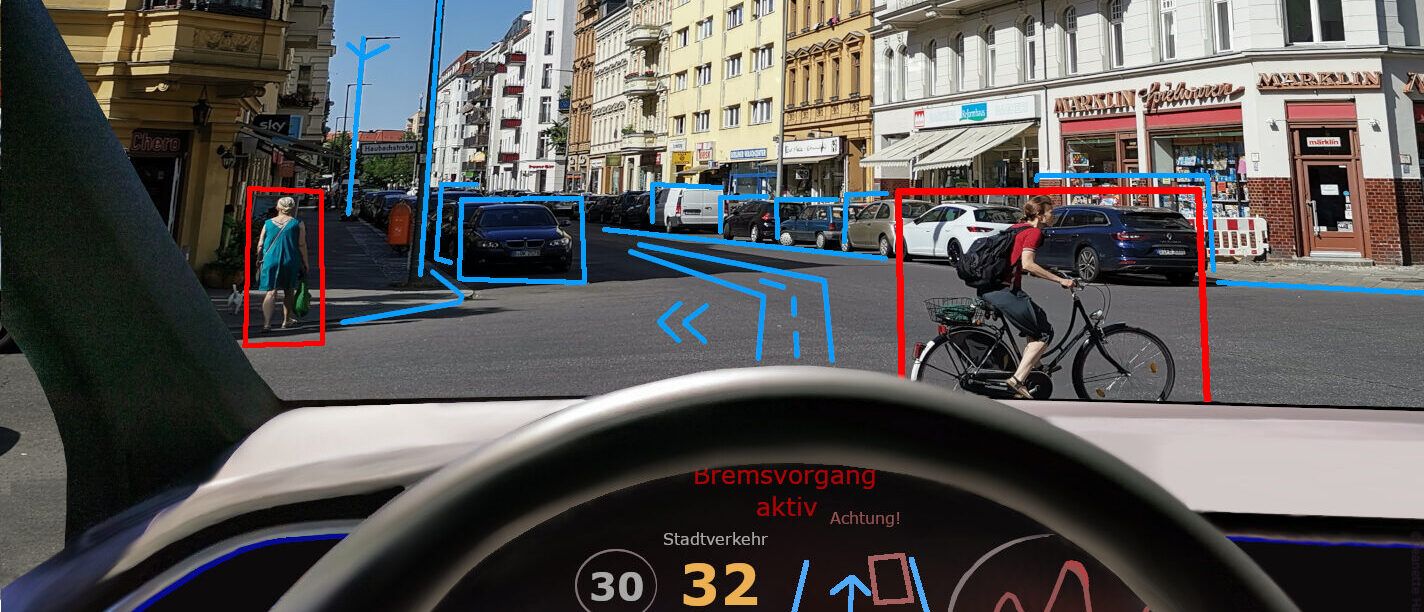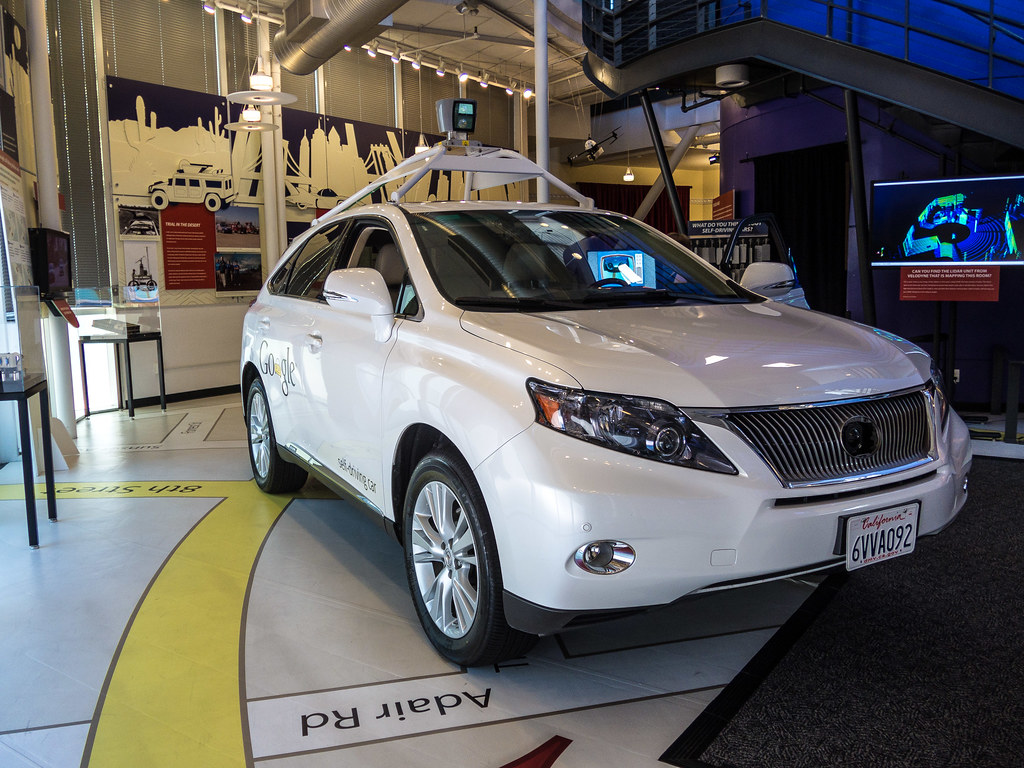
In the rapidly evolving landscape of automotive technology, Advanced Driver Assistance Systems (ADAS) have emerged as a cornerstone for enhancing vehicle safety and driver convenience. These intricate technologies, which include everything from automatic emergency braking to lane-keeping assist, leverage an array of sensors, cameras, and software to provide an extra layer of protection on the road.
However, acquiring a used vehicle equipped with ADAS presents a unique set of considerations for the discerning buyer. Unlike new cars, where these systems are often guaranteed and up-to-date, a pre-owned vehicle requires a thorough investigation to ensure its ADAS components are fully functional, properly calibrated, and ready to deliver the safety benefits they promise. Without careful scrutiny, consumers might unknowingly purchase a vehicle with compromised safety features.
To empower you with the knowledge needed to make a truly informed decision, our automotive experts have compiled a comprehensive list of crucial questions. Asking these questions will help you navigate the complexities of ADAS in used vehicles, allowing you to confidently select a car that offers both value and uncompromised safety. This first section delves into the initial assessment, guiding you through the critical aspects of functionality, history, calibration, and potential risks.

1. **What specific Advanced Driver Assistance Systems (ADAS) are installed in this vehicle?**Understanding the exact suite of Advanced Driver Assistance Systems present in a used vehicle is the fundamental first step in your evaluation process. Modern vehicles can come equipped with a wide variety of ADAS features, such as Forward Collision Warning (FCW), Automatic Emergency Braking (AEB), Blind-Spot Monitoring (BSM), and Adaptive Cruise Control (ACC), to name just a few. Each system is designed to provide specific assistance, and knowing which ones are integrated is crucial for assessing the vehicle’s overall safety profile.
These systems operate through a sophisticated network of sensors, cameras, radar, and a Central Processing Unit (ECU) that constantly monitors the vehicle’s surroundings. For instance, high-resolution cameras detect lane markings and traffic signs, while radar sensors provide precise distance measurements for collision detection. Without a clear understanding of what’s installed, you cannot effectively assess their condition or verify their operation.
Our primary recommendation is to “Read up: Read your owner’s manual to learn what systems are installed in your vehicle.” This manual serves as an invaluable resource, detailing the specific technologies the vehicle was manufactured with. Additionally, conducting independent research on automotive websites like Edmunds or the government’s National Highway Traffic Safety Administration (NHTSA) website can clarify which features were standard or optional for that particular model year and trim level.
It is important to recognize that ADAS offerings can vary significantly even within the same vehicle model across different years. As an example, a 2016 Toyota RAV4 might have offered forward collision warning and automatic emergency braking as optional, while these features became standard by 2020. This variability underscores the need for meticulous research to confirm the presence and status of all desirable ADAS features.

2. **How do I verify the functionality of each ADAS component during a test drive?**A test drive is your prime opportunity to actively evaluate the performance of the Advanced Driver Assistance Systems. It’s not enough to simply know a system is present; you need to confirm that it operates smoothly and as intended. Features such as adaptive cruise control, lane-keeping assist, and collision warning systems must activate and perform without hesitation or erratic behavior.
For adaptive cruise control, observe how the vehicle adjusts its speed to maintain a safe distance from the car ahead, ensuring it does so naturally and without abrupt braking or acceleration. When testing lane departure warning or lane-keeping assist, note if the system accurately detects unintentional lane drifts and provides clear, timely alerts or gentle steering corrections. This hands-on experience allows you to gauge the system’s responsiveness and reliability.
Pay close attention to any unusual system behavior, such as delayed responses, inconsistent warnings, or, critically, any illuminated warning lights on the dashboard related to ADAS. These indicators could signal underlying sensor issues, software glitches, or miscalibration that require professional attention. The purpose of this verification is to identify potential problems that might not be immediately apparent and could affect safety.
As experts, we strongly encourage you to “Insist on an in-vehicle demonstration and test drive to better understand how the systems will engage on the roadway.” This allows you to experience the systems in real-world conditions, asking questions about their alerts, functions, capabilities, and any specific limitations they might have under various driving scenarios.

3. **Has this vehicle been involved in any collisions or repairs that might affect its ADAS performance?**
The collision and repair history of a used vehicle is a critical factor when evaluating its Advanced Driver Assistance Systems. Any prior damage, particularly involving the front end, bumpers, or windshields, can have a profound impact on the alignment and functionality of ADAS sensors and cameras. These components are precisely positioned to ensure accurate data collection and system operation, and even minor impacts can compromise their integrity.
For instance, a front-end collision might cause radar sensors to become misaligned, leading to unpredictable adaptive cruise control behavior or inaccurate forward collision warnings. Similarly, windshield replacement, if not performed with meticulous care, can disrupt the calibration of forward-facing cameras essential for lane departure warning and automatic emergency braking. Such misalignments can result in safety features behaving unpredictably or failing to activate when needed.
It is essential to review the vehicle’s history report thoroughly, looking for any records of accidents or significant repairs. Beyond simply identifying past damage, you must also confirm whether any repairs involving ADAS-related components included proper system calibration. Without this crucial step, the system’s accuracy may be permanently compromised, potentially reducing its effectiveness in preventing accidents.
Even seemingly minor incidents can have lasting effects. Ensuring the vehicle’s structural integrity and sensor alignment post-repair is vital. Ignoring these details can lead to a false sense of security, as the ADAS might not function as designed in a critical moment, increasing the risk of accidents rather than preventing them.

4. **Can you provide documentation confirming the calibration status of the ADAS sensors?**One of the most overlooked yet critical aspects of purchasing a used vehicle with Advanced Driver Assistance Systems is confirming the calibration status of its sensors. Proper ADAS system calibration involves positioning sensors and cameras precisely to ensure they accurately detect and interpret the vehicle’s surroundings. These systems are highly sensitive, and even slight deviations from manufacturer specifications can impair their performance.
Documentation from a recognized ADAS calibration center provides irrefutable evidence that these vital steps have been completed correctly. It serves as a record of professional service, indicating that the sensors and cameras have been tested and adjusted according to the vehicle manufacturer’s exacting standards. Without such records, you lack assurance that the systems are operating within their optimal parameters.
Consider the example of a windshield replacement; this common repair often necessitates calibrating forward-facing cameras to restore full functionality. If this calibration is overlooked or performed improperly, critical features like automatic emergency braking or lane-keeping assist may not work correctly, or could even be entirely disabled. The absence of documentation should be a significant red flag, prompting further investigation.
Trusting professional service for ADAS system calibration makes sure that your investment continues to provide the safety and convenience these technologies offer. This documentation is not merely a formality; it is a tangible guarantee of the system’s accuracy and reliability, directly contributing to your safety and that of your passengers on the road.

5. **What are the risks associated with misaligned or malfunctioning ADAS sensors and cameras in this specific model?**
At the core of every Advanced Driver Assistance System are its sensors and cameras, acting as the vehicle’s eyes and ears. If these components become misaligned due to factors like previous accidents, improper repairs, or even minor bumps, the entire system’s accuracy and reliability can be severely compromised. Understanding these risks is paramount for a used car buyer.
For example, a forward-facing camera that is even slightly out of alignment might fail to correctly detect lane markings. This can cause the lane-keeping assist system to malfunction or stop working altogether, leaving the driver without a crucial safety net. Similarly, radar sensors that are misaligned can cause the adaptive cruise control to act unpredictably, leading to sudden, unnecessary braking or, more dangerously, a failure to detect obstacles ahead, increasing collision risk.
The consequences of misaligned or malfunctioning ADAS components extend beyond mere inconvenience. They can lead to false warnings, where the system alerts the driver to non-existent hazards, or, conversely, a complete loss of critical safety features when they are most needed. In either scenario, the driver’s trust in the system erodes, and the risk of accidents significantly increases, potentially leading to deadly crashes.
Ignoring sensor alignment issues can have severe safety implications. It is vital to recognize that these systems are designed to supplement, not replace, driver attention. When they are not functioning correctly, they can create new hazards. A professional ADAS inspection is often the only reliable way to detect these subtle but dangerous malfunctions, ensuring that the vehicle’s safety features are genuinely enhancing road safety.

6. **What are the potential costs for repairing or calibrating ADAS components in this vehicle?**Beyond the initial purchase price, buying a used vehicle equipped with Advanced Driver Assistance Systems carries the potential for unexpected expenses related to repair and calibration. These costs can be substantial and vary significantly depending on the specific type of sensor, the vehicle’s make and model, and the complexity of the required work. It is crucial to anticipate these potential financial commitments.
For instance, calibrating windshield-mounted cameras, a common requirement after windshield replacement, typically costs a few hundred dollars. However, the repair or replacement of radar sensors, particularly if hardware damage is involved, can escalate into much higher costs. These expenses also fluctuate based on labor rates and regional pricing differences, making it wise to research local service provider costs.
Budgeting for these potential repairs is a prudent step for any used vehicle buyer. Neglecting calibration or postponing necessary repairs to ADAS components can have severe consequences, compromising the vehicle’s safety features and potentially leading to more expensive damage in the future. The initial savings on a used car could quickly be offset by unforeseen ADAS maintenance costs if not properly factored in.
When inquiring about potential costs, it is advisable to find an ADAS calibration center near you that provides clear and transparent pricing details. Understanding these potential expenditures upfront can help you avoid surprises and ensure that your investment in a used vehicle with ADAS continues to deliver its intended safety and convenience without becoming a financial burden.

7. **What is the current software version for the ADAS, and have all relevant updates been applied?**
The performance and reliability of Advanced Driver Assistance Systems depend not only on their physical hardware but also critically on the sophisticated software that controls their functions. Like any complex computer system, ADAS software requires regular updates released by manufacturers to improve performance, fix bugs, enhance features, and address any compatibility issues that may arise.
A used vehicle with outdated ADAS software might experience a range of problems, from subtle glitches to significantly reduced responsiveness in critical safety features. Without the most current updates, certain features may malfunction or fail to activate when needed, diminishing the system’s effectiveness and potentially compromising safety. This means that a physically sound ADAS component might still underperform due to old software.
It is essential to verify that the used vehicle’s ADAS software has been regularly updated according to the manufacturer’s recommendations. This can often be determined by asking the seller for service records or by having a professional inspection performed. Some modern vehicles support Over-the-Air (OTA) updates, which allow for continuous software improvements and new feature additions, making ongoing software maintenance even more critical.
Ensuring that the vehicle’s ADAS software is current can significantly reduce the risk of encountering issues shortly after purchase. A thorough inspection and software check at trusted advanced ADAS calibration centers before buying a used vehicle is highly recommended. This proactive step helps you avoid hidden problems and ensures the vehicle’s safety systems operate reliably and efficiently, providing the advanced protection you expect.
As you move closer to making a purchase decision for a used vehicle equipped with Advanced Driver Assistance Systems, a second set of critical questions arises, shifting focus from initial assessment to the long-term aspects of safety, performance, and ownership. This section will guide you through essential considerations regarding ADAS maintenance, the importance of professional services, understanding system limitations, and how to conduct informed research to ensure your investment continues to provide safety and value for years to come.

8. **How often should the ADAS components be professionally inspected or maintained?**The longevity and reliable operation of Advanced Driver Assistance Systems are not a ‘set-it-and-forget-it’ proposition; they demand ongoing attention. Just like any other complex system in your vehicle, ADAS components benefit significantly from routine professional inspections and maintenance. Regular diagnostic checks can proactively identify problems such as subtle sensor faults or calibration drift that might not be immediately apparent during everyday driving.
Many reputable repair shops and specialized ADAS calibration centers offer scanning services specifically designed to monitor the status and health of these intricate systems. These diagnostic checks are crucial because they allow you to address any potential issues before they escalate into more significant problems, affecting your vehicle’s safety features. Studies indicate that such routine diagnostics can significantly reduce unexpected failures by identifying faults that might otherwise go unnoticed, thereby supporting continued reliability and extending the effective life of your vehicle’s safety technology.
Beyond routine checks, timely calibration is absolutely necessary following specific events such as windshield replacement, any collision damage—even minor ones—or the replacement of any ADAS sensor. These systems rely on sensors and cameras being precisely aligned to function correctly. Without proper calibration after such repairs, critical features like lane departure warnings or adaptive cruise control might not work as intended, or could even be entirely disabled, compromising the very safety benefits they are designed to provide.
The costs and, more importantly, the risks of ignoring necessary calibration can be substantial. A miscalibrated system can lead to inaccurate alerts, false warnings, or a complete failure to intervene in critical moments, creating a false sense of security for the driver. Therefore, understanding and committing to a schedule of professional inspection and maintenance is paramount to ensuring your used vehicle’s ADAS continues to perform reliably and efficiently, providing the advanced protection you expect.

9. **What should I look for in a reliable ADAS calibration center, and are there certified facilities for this vehicle?**
Entrusting the maintenance and calibration of your vehicle’s Advanced Driver Assistance Systems to the right professionals is a decision that directly impacts your safety. With the increasing complexity of ADAS technologies, not all service centers are equally equipped or qualified. It is crucial to be selective when choosing a facility for ADAS calibration.
When evaluating potential ADAS calibration centers, prioritize those staffed with highly trained technicians who possess specialized knowledge in these systems. Equally important is the presence of specialized tools and equipment, as ADAS calibration requires precision instruments that can accurately position sensors and cameras according to manufacturer specifications. A shop lacking the correct equipment or expertise may not be able to deliver reliable results, potentially compromising the accuracy and effectiveness of your vehicle’s safety features. Customer feedback and endorsements from industry professionals can offer valuable insights into a facility’s reputation and the quality of its service.
Before committing to a service, always ask the center if they provide documented evidence of the calibration performed. This documentation serves as a vital record, demonstrating that your vehicle’s sensors and cameras have been meticulously tested and adjusted in strict accordance with the vehicle manufacturer’s guidelines. Since ADAS setups can vary significantly between different brands and models, the calibration process must rigidly adhere to the specific protocols set by each automaker. Without this meticulous attention to detail and proof of service, the performance and reliability of your vehicle’s safety systems could remain compromised.
Furthermore, inquire about the duration of the service and any warranty terms associated with the work performed. Understanding the expected timeline for calibration helps you plan accordingly, and a warranty provides an essential layer of confidence in the service quality. Discussing the tools and methods the center employs is also beneficial, as advanced calibration often involves equipment capable of simulating driving conditions and precisely measuring sensor accuracy. Post-calibration testing should always be a part of the process to verify that all ADAS features operate correctly and reliably after adjustments. Clear communication throughout this process is key, empowering you to trust that your vehicle will be safe and reliable on the road.

10. **Are there specific environmental or driving conditions under which the ADAS features of this model might not perform optimally?**
While Advanced Driver Assistance Systems are designed to enhance safety and convenience, it is important to understand that they are not infallible. Despite their advanced capabilities, ADAS features do have inherent limitations, particularly concerning environmental and specific driving conditions that can impede their optimal performance. Being aware of these limitations is crucial for any driver, especially when relying on these systems in a used vehicle.
One of the most significant factors affecting ADAS performance is weather sensitivity. Adverse conditions such as heavy fog, torrential rain, or thick snow can severely impact the effectiveness of the cameras and sensors that are fundamental to ADAS operation. For instance, high-resolution cameras, which detect lane markings and traffic signs, can have their vision obscured, potentially causing lane-keeping assist or traffic sign recognition systems to malfunction or even cease functioning. Similarly, radar sensors, crucial for adaptive cruise control and collision detection, may experience reduced accuracy in severe weather.
Beyond weather, complex driving environments can also lead to what is sometimes referred to as ‘system confusion.’ Poorly marked roads, convoluted urban landscapes with numerous visual distractions, or areas with frequent construction can present challenges for ADAS. In such scenarios, systems designed to interpret the driving environment might struggle to accurately detect hazards or maintain their intended functions. For example, automatic emergency braking might react to an object that isn’t a true threat, or conversely, fail to recognize a legitimate hazard due to conflicting data.
It is vital for drivers to recognize that ADAS are aids, not replacements for attentive driving. The aim of these systems is to support safer driving through automation, alerts, and active intervention, but they do not eliminate the need for human vigilance. Understanding these limitations empowers you to drive more safely, knowing when to rely on the systems and, more importantly, when to take full manual control, especially when conditions are less than ideal. This informed awareness helps prevent over-reliance and ensures you can anticipate scenarios where ADAS performance might be compromised.

11. **What are the manufacturer’s recommendations for driver interaction with these ADAS features, and how can I avoid over-reliance?**
Advanced Driver Assistance Systems are powerful tools, but they are fundamentally designed to augment, not replace, the driver’s attention and judgment. A critical aspect of safe operation, particularly with a used vehicle where you might be less familiar with its history, is understanding and adhering to the manufacturer’s specific recommendations for driver interaction with these technologies. This knowledge is paramount to prevent misuse or over-reliance, which could lead to dangerous situations.
The manufacturer’s owner’s manual is an invaluable resource, often detailing the precise functions, capabilities, and, crucially, the limitations of each ADAS feature installed in the vehicle. It outlines how the systems are intended to engage on the roadway, what alerts they provide, and under what scenarios they might not function optimally. Edmunds, a leading automotive website, strongly recommends that drivers “Read up: Read your owner’s manual to learn what systems are installed in your vehicle.” This foundational step is often overlooked but provides essential context for safe operation.
Furthermore, active engagement during a test drive and asking questions is encouraged. Experts advise consumers to “Insist on an in-vehicle demonstration and test drive to better understand how the systems will engage on the roadway.” During this demonstration, you should “Ask plenty of questions about the alerts, functions, capabilities and limitations of the vehicle’s safety technologies before leaving the dealership.” This includes inquiring about scenarios where a technology might not function properly on the road. For example, understanding if adaptive cruise control maintains distance in heavy stop-and-go traffic, or if lane-keeping assist works on winding roads, is vital.
The overarching goal is to prevent the “Lack of understanding or confusion about the proper function of these ADAS technologies [that] can lead to misuse or overreliance on the technology, which could result in a deadly crash.” Remaining alert and engaged, even when ADAS features are active, is non-negotiable. These systems are an extra layer of protection, designed to supplement human input and provide warnings, not to allow for full disengagement. By actively learning about and respecting the boundaries of your vehicle’s ADAS, you ensure they function as intended: to enhance safety without fostering a dangerous sense of complacency.

12. **Where can I find unbiased, detailed information and research about the long-term reliability and updates for these specific ADAS features?**
When purchasing a used vehicle, especially one equipped with complex Advanced Driver Assistance Systems, conducting thorough and unbiased research is essential for making an informed decision about its long-term reliability and the availability of updates. The landscape of ADAS technology evolves rapidly, and what was cutting-edge a few years ago might have seen significant improvements or updates since.
Reliable sources are key to understanding the nuances of ADAS in specific models and model years. Automotive experts at Edmunds recommend that consumers “research the vehicles you’re interested in on auto websites such as Edmunds or check out the government’s National Highway Traffic Safety Administration website.” These platforms provide comprehensive data, expert reviews, safety ratings, and recall information that can shed light on the performance and any documented issues with ADAS components in particular vehicles. For instance, the context highlights how “a 2016 Toyota RAV4 might have offered forward collision warning and automatic emergency braking as optional, while these features became standard by 2020,” underscoring the need for model-year specific research.
Staying informed about software updates is also a crucial part of long-term ADAS reliability. The performance of these systems depends heavily on their sophisticated software. Manufacturers regularly release updates to improve functionality, fix bugs, and enhance compatibility. While some modern vehicles support Over-the-Air (OTA) updates, older used models might require dealership visits. Inquiring about the software update history and future update policies for the specific vehicle you are considering is a prudent step. This can often be determined by asking the seller for service records or by having a professional inspection performed by trusted advanced ADAS calibration centers.
Furthermore, organizations like AAA play a significant role in advocating for better consumer education regarding ADAS technologies. They conduct research and share findings to help spur the development of effective educational tools, emphasizing that “Strong consumer education about vehicle technology needs to become as much of a priority for automakers as making the sale.” Consulting their newsroom for the latest automotive research can provide valuable insights into driver attitudes, understanding, and the overall effectiveness and limitations of various ADAS technologies. Empowering yourself with knowledge from these credible sources will enable you to better anticipate the long-term performance and maintenance needs of your used vehicle’s ADAS.
13. **How do ADAS features impact insurance premiums and the vehicle’s resale value in the long term?**
Beyond the immediate safety benefits and potential maintenance costs, Advanced Driver Assistance Systems offer tangible financial advantages that can significantly influence the overall cost of ownership for a used vehicle. Understanding these long-term impacts on insurance premiums and resale value is a smart part of your purchasing decision.
One of the most appealing financial incentives for vehicles equipped with ADAS is the potential for lower insurance premiums. Many insurance companies recognize that features like automatic emergency braking (AEB), forward collision warning (FCW), and blind-spot monitoring (BSM) actively reduce the likelihood and severity of accidents. Studies from the Insurance Institute for Highway Safety, for example, show that systems with forward collision warning and automatic emergency braking cut rear-end crashes in half, while forward collision warning alone reduces them by 27%. The auto brake systems also greatly reduce rear-end crashes involving injury. Consequently, many insurers offer discounts for vehicles that include these proven safety technologies, directly leading to savings over the life of your policy.
Moreover, the presence of ADAS features can positively influence a used vehicle’s resale value. As consumer awareness and demand for advanced safety technology continue to grow, cars equipped with these features typically command higher prices in the secondary market. Buyers are increasingly prioritizing vehicles that offer an enhanced layer of protection and convenience, making ADAS-equipped cars more desirable. This increased demand for safety technology translates into “Better Resale Value” for the owner, providing a stronger return on investment when it’s time to sell or trade in the vehicle.
Considering these financial aspects—reduced insurance costs and enhanced resale value—alongside the primary benefits of increased safety, paints a comprehensive picture of the value proposition of a used vehicle with ADAS. While there are potential upfront costs for repairs or calibration, the long-term financial advantages often help to offset these expenses and make the investment even more worthwhile. Therefore, when evaluating a used car, looking beyond the sticker price to these enduring economic benefits of its ADAS package can lead to a more financially astute and safer purchase.
Making an informed decision about a used car with Advanced Driver Assistance Systems goes far beyond just liking its color or test-driving its engine. It’s about empowering yourself with knowledge, asking the right questions, and prioritizing long-term safety and value. By meticulously evaluating ADAS components, understanding their maintenance needs, recognizing their limitations, and leveraging reliable resources, you can confidently choose a vehicle that not only meets your transportation needs but also provides peace of mind and enhanced protection for every journey. Your diligence today ensures safer, more reliable driving for years to come.




